Computer Networking is a field of study and practice focused on the design, implementation, and management of interconnected computer systems and devices.
It encompasses the technologies, protocols, and methodologies that enable computers to communicate and share resources over various types of networks, ranging from local networks (LANs) to wide area networks (WANs) and the internet.
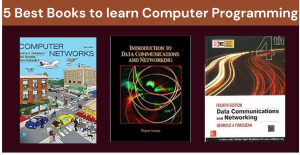
5 Best Books to learn Computer Networking
Computer Networking is a critical field that focuses on connecting computers and devices to enable communication and resource sharing across various types of networks. It encompasses a range of technologies and protocols that facilitate data transmission and management.
From Local Area Networks (LANs) that cover smaller areas like homes or offices, to Wide Area Networks (WANs) and the global internet, networking connects devices and systems efficiently.
IP addressing provides unique identifiers for each device, while data is transmitted in packets to enhance efficiency and reliability.
Why To Learn Computer Newtworking
Learning computer networking is essential for several reasons, as it underpins the foundation of modern technology and communication. Here are some key reasons to delve into this field:
Fundamental to Technology: Understanding computer networking is crucial because it forms the backbone of how information technology systems operate.
Career Opportunities: The skills and knowledge gained from learning computer networking open up a wide range of career opportunities.
Enhanced Troubleshooting Skills: Networking knowledge equips you with the ability to diagnose and resolve connectivity issues, optimize network performance, and ensure reliable communication between devices.
Cybersecurity: A strong grasp of networking is essential for understanding and implementing security measures to protect against cyber threats. Knowledge of networking helps in setting up firewalls, intrusion detection systems.
Network Design and Management: Learning computer networking allows you to design, configure, and manage various types of networks, from local setups to global infrastructures.
5 Best Books To Learn Computer Networking
Here are 5 Best books according to our research mentioned below:
1) “Computer Networks” by Andrew Tanenbaum

“Computer Networks” by Andrew Tanenbaum
Computer Networks by Andrew S. Tanenbaum is a highly regarded textbook that offers a comprehensive introduction to the field of computer networking.
Tanenbaum, a well-known figure in computer science, is celebrated for his clear and accessible writing style, and this book is no exception.
One of the book’s strengths is its balance between theoretical concepts and practical implementation. Tanenbaum explains complex topics in a way that’s easy to understand, often using real-world examples and illustrations to clarify abstract ideas.
2) “Data Communications and Networking” by Behrouz A. Forouzan
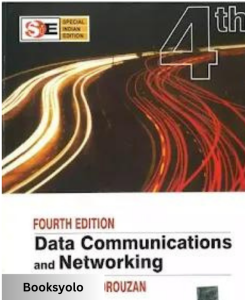
Data Communications and Networking” by Behrouz A. Forouzan
Data Communications and Networking by Behrouz A. Forouzan is a well-regarded textbook that provides a thorough introduction to the field of data communications and networking.
It explores fundamental concepts such as data transmission, network models (including OSI and TCP/IP), error detection and correction, and network protocols.
Forouzan’s text is often praised for its pedagogical approach, which includes numerous examples, diagrams, and real-world applications to help readers grasp complex concepts.
3) “Introduction to Data Communications and Networking” by Wayne Tomasi
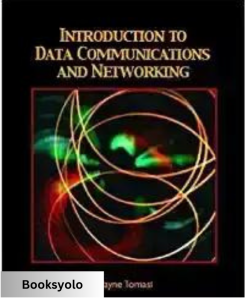
Introduction to Data Communications and Networking” by Wayne Tomasi
In the introduction to Wayne Tomasi’s Introduction to Data Communications and Networking, the author sets the stage for exploring the fundamental aspects of data communications and networking.
Tomasi highlights the critical role these technologies play in modern society, connecting people and systems globally and enabling efficient information exchange.
It aims to offer readers a foundational understanding of essential concepts, historical context, and the importance of these technologies in today’s world. By clarifying the learning objectives.
It presents a broad overview of fundamental topics, including the basic principles of data communication, the evolution of networking technologies, and the standards that govern data exchange.
4) Fundamentals of Data Communications and Networking
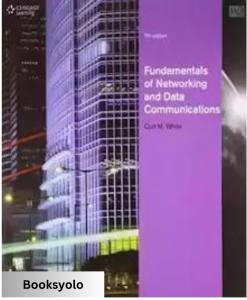
Fundamentals of Data Communications and Networking” by Jerrold Stern
Fundamentals of Data Communications and Networking, the author provides a comprehensive overview of the foundational principles and concepts essential for understanding the field of data communications and networking.
Stern begins by highlighting the pivotal role that data communication systems play in modern technology, emphasizing their impact on everything from business operations to personal communication.
The introduction typically outlines the primary goals of the book, which are to equip readers with a solid understanding of how data is transmitted and managed across various types of networks.
This section serves to orient readers, offering a roadmap of the subjects to be explored and explaining how each contributes to a broader understanding of the field.
5) “Local Area Networks” by William Stallings
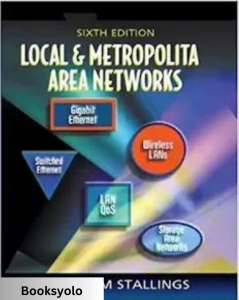
Local Area Networks” by William Stallings
- Recap of Key Concepts: The conclusion revisits the core principles of computer networking, including network topologies, protocols, data transmission methods, and network security.
- Integration of Topics: It often highlights how the various topics discussed throughout the book are interconnected.
- Practical Implications: The conclusion may emphasize the real-world applications of the concepts covered, such as the impact of networking technologies on business operations, cybersecurity, and global communication.
- Future Directions: Authors often reflect on emerging trends and future developments in computer networking.
- Final Thoughts: The conclusion typically offers final reflections on the importance of networking knowledge and its role in an increasingly connected world.







Leave a Comment